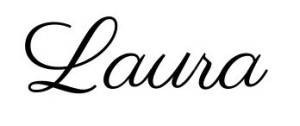They say that living is an art but I am starting to think that sleeping is an art, too! It’s just not as easy as it was when I was a kid—just plop me down in the bed and boom, I’m out.
Now there are so many other variables to take into consideration—what you had to eat or drink—what you watched on tv—the discussion on-line— whether your bed is at the right angle—if you have a mirror in the wrong place.
With so many details like this rattling around our heads, no wonder sleeplessness has gotten to be an epidemic.
Like everything else, I think it boils down to keeping a rhythm in your daily life. What they call circadian rhythms—the biological clock. In fact we have a whole system of these internal clocks regulating a long list of body functions including hormone production, hunger, cell regeneration, and body temperature. Research supported by the National Institute of Health has shown that circadian rhythms play an influential role in obesity, depression, seasonal affective disorder—and sleeplessness.
All these different body clocks are governed by a Master Clock, which lies in the hypothalamus in a group of cells called the suprachiasmatic nucleus or SCN. These cells are light sensitive and when it starts to get dark, they stimulate the release of the hormone melatonin. Light stimulates the release of another hormone cortisol, the “stress hormone” which raises blood pressure, body temperature and mobilizes you for activity.
It doesn’t take a genius to see that if too much light is introduced at the wrong time of day, it can send your Master Clock the wrong signal, which can start to churn that old cortisol into the bloodstream—and instead of getting sleepy, your mind can get revved up for a night of tossing and turning.
Among the various internal factors directing the body clocks, is a protein they have named CLOCK. CLOCK works in counter balance with another metabolic protein called SIRT1, the cell’s energy gauge. When these two proteins get out of sync with each other, it can contribute to sleep disruption, increased hunger and in cases of chronic imbalances, obesity.
Researchers at University of North Carolina-Chapel Hill find that DNA repair systems are more active in the afternoons and evenings.
Research has shown that adult’s strongest sleep drive is between 2 and 4 am and in the afternoon between 1 and 3 pm. This can vary of course depending on whether you are a morning or evening person. The intensity of these energy dips we experience during these periods will depend on how much sleep we had the night before.

